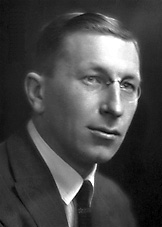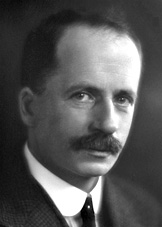April 30th, 2008 · Comments Off on Chemical Structure ·
Background Information| Chemical Structure| How Codeine Works in the Body| Recreational Use| How Codeine Affects History
- The chemical formula for codeine is C18H21NO3
- The chemical name for the drug is expoxy-3methoxy-17-methylmorphian-6-ol.
- The alternative names for codeine are methylmorphine and morphine monomethyl ether.
- Boiling Point: 250C (480.F) at 22mm
- Melting Point: 154-156.C (309.2-312.8.F)
- The drug is slightly soluble in water and freely soluble in alcohol
Categories: Codeine
Tags: Camille Walfall —
April 30th, 2008 · Comments Off on History Affects Morphine II: Cultural Antipathy and Anti-Narcotics Laws ·
Morphine: An Introduction | Discovery and Synthesis of Morphine | Addiction and Opiate Receptors | Morphine Affects History: Modern Pharmacology | History Affects Morphine: The Hypodermic Needle | History Affects Morphine II: Cultural Antipathy and Anti-Narcotics Law| References
-
During the 19th century morphine – like many other narcotics of the day – was not regulated by federal law
-
The actual impetus for the criminalization of drugs lay in the transformation of drug users into “moral reprobates” (Watters)
-
By the end of that century, the view of drug use went from that of illness – as seen with Civil War soldiers – to that of a “manifestation of moral weakness;” such a negative view was linked to growing animosity toward immigrants from East Asia, as drugs – especially opium – became indicative of a foreign adulteration of “pure” American culture (Renner)
-
It may have also linked to residual Puritan values and the Third Great Awakening; William Shughart states that the “federal antinarcotics crusade […] is justifiably seen as a component of the progressive-prohibitionist campaign that originated with the religious precepts of the Puritan colonists”
-
In response to these undercurrents, then, many states adopted anti-narcotics laws in the late 1890s, and the federal government followed suit, passing both the Pure Food and Drug Act of 1906 and the Harrison Narcotics Act of 1914
-
The Pure Food and Drug Act required contents to appear on the label of many products, and as a result, the amount of morphine and cocaine in pharmaceuticals was not only reduced, but the demand for and use of morphine, opium, and heroin dropped drastically
-
As for the Harrison Act, which marked the “first salvo in the war on drugs” (Renner), it put intense pressure via tax legislation on the many public morphine maintenance clinics, at which addicts could receive their drug from physicians
Categories: Morphine
Tags: James Watson-Krips —
April 30th, 2008 · Comments Off on History Affects Morphine: The Hypodermic Needle ·
Morphine: An Introduction | Discovery and Synthesis of Morphine | Addiction and Opiate Receptors | Morphine Affects History: Modern Pharmacology | History Affects Morphine: The Hypodermic Needle | History Affects Morphine II: Cultural Antipathy and Anti-Narcotics Law| References
“Ah! Pierce me one hundred times with your needle fine
And I will thank you one hundred times, Saint Morphine,
You who Aesculapus has made a God.”
– Jules Verne
(Poem taken from In the Arms of Morpheus by Barbara Hodgson)
-
Despite its impact on the science of pharmacology, morphine had limited medical impact until the invention of the hypodermic needle in the 1840s/1850s
-
A number of individuals are associated with the invention of the hypodermic needle, but among them, Alexander Wood, a Scottish physician, is perhaps the most prominent
-
Wood used morphine in conjunction with his newly invented needle to treat a patient with neuralgia, otherwise known as a sharp pain in the nerves; unfortunately, Wood also used his device on both he and his wife, and both became addicted. In fact, Wood’s wife became the first woman to die of a narcotic drug overdose
-
In light of this, however, Wood found that upon injection, morphine’s results were both immediate and much more powerful, certainly a success; such success led to a rise in the medical use of morphine, especially in the realm of surgery and anesthesia
-
Unfortunately, though, morphine administered through hypodermic needle was not thought to be addictive, and thus it further proliferated the drug, increasing use and addiction
-
Interestingly, it is worth noting that shortly after the time of the hypodermic needle’s inception, there began a debate over whether the effects of morphine post-injection were localized or not; and while many believe the effects to be non-localized – hence the name hypodermic – the debate actually continues to this day
Historical perspective: old syringes
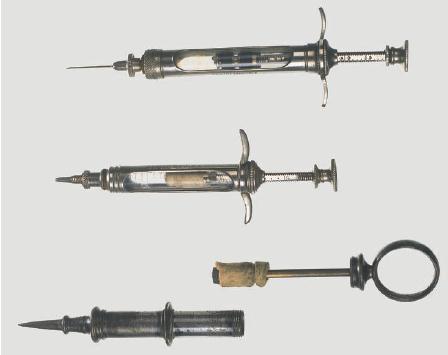
(http://www.aaic.net.au/PDF/1999485.pdf)
Categories: Morphine
Tags: James Watson-Krips —
April 30th, 2008 · Comments Off on Morphine Affects History: Modern Pharmacology ·
Morphine: An Introduction | Discovery and Synthesis of Morphine | Addiction and Opiate Receptors | Morphine Affects History: Modern Pharmacology | History Affects Morphine: The Hypodermic Needle | History Affects Morphine II: Cultural Antipathy and Anti-Narcotics Law| References
-
Upon reporting his successful isolation of morphine, Sertürner was lauded by the Institut de France for having “opened the way to important medical discoveries” (Berridge and Edwards)
-
His experiment proved “that plants contain active substances that, on isolation, carry the therapeutic properties of the plant”; it is no surprise then, that the isolation of morphine, the first such isolation of a “natural product,” was a “seminal event in the development of pharmacology as an independent discipline” (Huxtable and Schwarz)
-
Sertürner is known as the “father or alkaloid chemistry” (Herbert, Venter, and Pos), and his discovery is said to mark the beginning of the “modern era of narcotics” (Blakemore and White)
-
Indeed, shortly after the isolation of morphine, numerous other alkaloids were isolated, including important molecules like caffeine (1820) and nicotine (1828)
-
All told, then, it is fitting that Sir Robert Robinson – the man who deduced the molecule’s chemical structure – referred to morphine as a “veritable Proteus among molecules”
Categories: Morphine
Tags: James Watson-Krips —
April 30th, 2008 · 1 Comment ·
Morphine: An Introduction | Discovery and Synthesis of Morphine | Addiction and Opiate Receptors | Morphine Affects History: Modern Pharmacology | History Affects Morphine: The Hypodermic Needle | History Affects Morphine II: Cultural Antipathy and Anti-Narcotics Law| References
-
Morphine, as an opiate compound, affects the body at sites known as opiate receptors. These are located throughout the nervous system, mainly in the brain, spinal cord, and gut (C&E News)
-
Opiate receptors themselves were discovered in 1973, and as of today, three types are known: μ, κ, and σ receptors. Morphine has an affinity for the μ receptor
-
Such receptors are effectively turned on by morphine molecules; morphine molecules interact with receptors in what is known as a structure-activity relationship, thereby competing with and blocking endorphin molecules – short for endogenous morphoids – from binding there. This creates an imbalance in the synaptic cleft, and pain-relieving morphine molecules are in abundance; not surprisingly, this creates both the “analgesic (painkilling) and euphoric (exaggerated happiness) effects for which morphine is famous” (Waldron)
-
Why can morphine compete with endorphin molecules? The answer is such that morphine, like endorphin molecules, contains a “β-phenylethylamine unit,” something that lets both morphine and endorphins bind to the opiate receptor
Opiate receptor activity in the human brain:
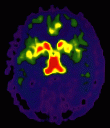
(http://www.sfn.org/skins/main/images/brainbriefings/opiate_illus.gif)
Categories: Morphine
Tags: James Watson-Krips —
April 30th, 2008 · Comments Off on History Affects Insulin ·
Introduction to Insulin / Chemical Properties / Methods of Production and Administering / Diabetes / Insulin Affects History / History Affects Insulin
- Recently, several pharmaceutical companies have attempted to alleviate the discomfort of injecting insulin by inventing the insulin inhaler.
- e.g. Exubera manufactured by Pfizer pharmaceutical company
- The idea of using lungs as the route for insulin administration has been researched for many years, but the right form and quantity of the hormone were never established.
- Tests have shown that dry powder insulin has a more rapid onset in comparison with the human insulin administered subcutaneously
-
- In the case of Exubera, a lot of time and money was spent in researching the product but not promoting it to the right market.
-
- it is possible that physicians were not willing to try something new
-
- early adopters of Exubera were overall satisfied with the product in spite of its cumbersome design
-
- concerns regarding the potential pulmonary toxicity still remain
- Early 2008, the insulin inhaler was taken off the market under allegations that the product was too clumsy to use and the powdered insulin might impair lung function
- Analysts estimated annual sales to be from $1 billion to $4 billion but in the first year on the market the product sold just under $12 million costing the company an estimated $2.8 billion

- patients found it embarrassing to use in public comparing the product to a “marijuana bong”
Reasons for the failure of the product
- poor marketing strategy
- the pharmaceutical firm did not market the product to nurses, certified diabetic educators, and physicians who play a great role in deciding to put patients on insulin.
- confidence that the product would “sell itself”
- patients are often apprehensive about using insulin because of the need to perform numerous injections
- Pfizer believed that the inhaler was the perfect alternative to traditional insulin injections
How do pharmaceutical companies reach their target audience?
- the supply of any new product is governed by drug distribution data that pharmaceutical companies gather in order to determine how big their market and market share is in various communities and how much potential there is in the region
- data for a given brand of insulin might show how many prescriptions have been written for that brand of insulin.
- Companies thus develop target lists of physicians to whom they promote their products
- physicians thought to show an active prescribing pattern for a class of drugs will attract more attention
- physicians at this time may exert influence on the company and its sales approach.
Trends in the pharmaceutical industry
- The current climate in the insulin market involves strong marketing and clinical advocacy in favor of newer products
- The market for insulin in the United States grows at more than 10% each year and much of the growth is fueled by the introduction of insulin analogs
- During 2002, insulin and other diabetes-related products represented the second largest product line for Eli Lilly (< $1.2 billion in annual worldwide sales) and the largest product group for Novo Nordisk (< $1.9 billion in annual worldwide sales)
- Total worldwide insulin for the three largest insulin manufacturers exceeded $3.3 billion in 2002
- innovation comes at a high cost

- retail prices of new insulin products are significantly higher than those of conventional insulin preparations
- the cost of equivalent amounts of insulin, in terms of units of insulin, is between 50 and 200% higher than for the conventional insulin methods of administration
- growth is projected to continue at the rate of 11% until 2020
- insulin sales are projected to exceed $7.5 billion this growth will be fueled by the introduction off increasingly more insulin products and alternatives
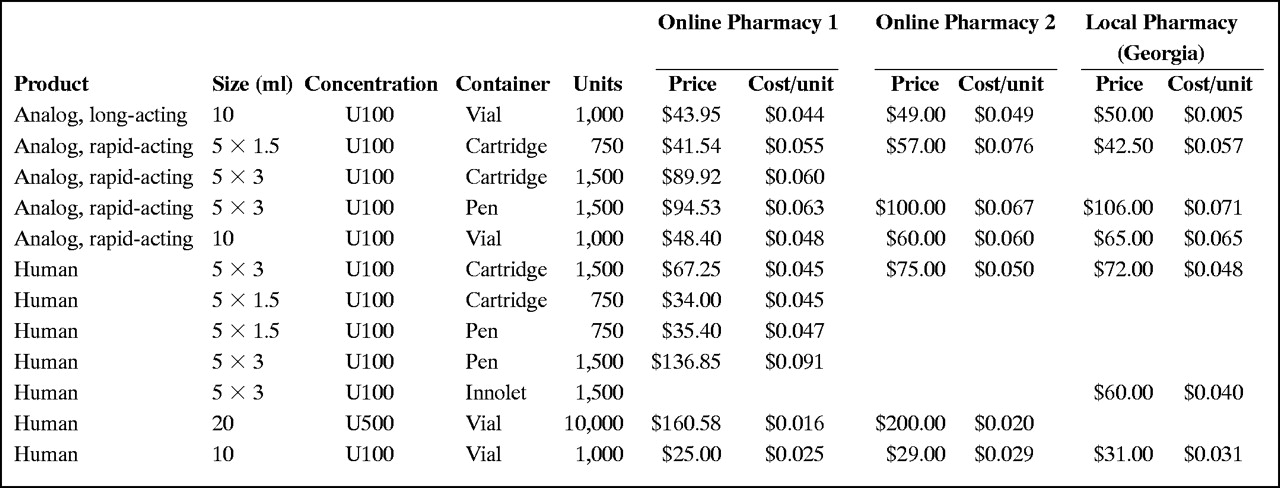
Categories: Insulin
Tags: Denisa Lazarescu —
April 30th, 2008 · Comments Off on Insulin Affects History ·
Introduction to Insulin / Chemical Properties / Methods of Production and Administering / Diabetes / Insulin Affects History / History Affects Insulin
- Before the 20th century diabetes was a deadly disease
- has been known since antiquity
- the Greek physician Aretaeus of Cappodocia provides the oldest description of diabetes and its symptoms, reporting how the diseases makes “life disgusting and painful; thirst unquenchable;…and one cannot stop them either from drinking or making water”
- the term diabetes derives from the Greek word “to siphon” or “to pass through” since ingested water seems to run quickly through the body
- 18th century British physician coins the medical term diabetes mellitus (the condition mellitus – meaning honey or sweet)
- Wave of research for a “cure”/ treatment for diabetes was spurred by the serendipitous discovery by Paul Langerhans in 1869 of the “little heaps of cells” (Islets of Langerhans) located on the surface of the pancreas
- 1889, Polish-German physician Oscar Minkowki carried out a series of tests on animals to determine the role of the islets in regulating sugar levels
- 1921: discovery and initial development of insulin by Frederick G. Banting, Charles H. Best, James B. Collip, John J.R. Macleod in Toronto
- 1923 Banting and Macleod shared the Nobel Prize for the discovery and initial development of insulin
- in spite of the ground-breaking discovery of insulin and miraculous improvement of people’s health world-wide, diabetes today is the primary cause of new-onset blindness, accounts for a third of all cases of kidney failure, leads to half of all non-traumatic limb amputations, and overall stands as the seventh leading cause of death
- Problem: transmutation
- transmuted diseases refer to diseases that transform or change according to the combined effects of treatments and physiological processes.
- transmutation altered the biology of diabetes to create variations of diabetes and other conditions over time
- much of the history of diabetes since the 1930 has been a struggle against complications as people try to live with a chronic disease for the rest of their lives
- people with diabetes are prone to a myriad of complications such as coronary artery disease and elevated cholesterol levels
- In a 2006 study by the World Health Organization, diabetics live with a substantial risk of heart attacks, heart failure, stroke, blindness, kidney failure, and nerve damage
- the more tightly a person with diabetes is able to control the levels of sugar in the blood – through treatment, exercise, and diet – the less likely it is that these complications will develop or worsen.
Categories: Insulin
Tags: Denisa Lazarescu —
April 30th, 2008 · Comments Off on Diabetes ·
Introduction to Insulin / Chemical Properties / Methods of Production and Administering / Diabetes / Insulin Affects History / History Affects Insulin
- if the body does not produce enough insulin to move the sugar into the cells, the resulting high levels of sugar in the blood and the lack of sugar in the cells produce the the symptoms and complications of diabetes
- Type I: In type 1 diabetes (formerly called insulin-dependent diabetes or juvenile-onset diabetes), more than 90% of the insulin-producing cells of the pancreas are destroyed. The pancreas produces little or no insulin. Only about 10% of all people with diabetes have type 1. Most people who have type one diabetes develop the disease before the age of 30.
- scientists believe that an environmental factor – a viral infection or a nutritional factor in childhood – causes the immune system to destroy the insulin-producing cells of the pancreas.
- Type II: in type 2 diabetes (formerly called non-insulin dependent diabetes or adult-onset diabetes) the pancreas continues to produce insulin, sometimes even at higher than normal levels. However, the body develops resistance to the effects of insulin, so there is not enough insulin to meet the body’s need. Type 2 diabetes may occur in children and adolescents, but usually becomes progressively more common with age.
- obesity is the chief risk factor for developing type 2 diabetes, and 80 to 90% of people with the disease are obese
Symptoms
- frequent urination
- abnormal thirst
- excessive and quick weight loss
- excessive hunger
- blurred vision
- nausea
- drowsiness
Treatment
- a combination of diet, exercise, education, and medication
- if a person with diabetes keeps blood sugar levels tightly controlled, complications are less likely to develop
- avoid sweet foods
- eat meals on a regular schedule
- people with diabetes also tend to have high levels of cholesterol in their blood, so limiting the amount of saturated fat in the diet is important
- Insulin is injected under the skin into the fat layer using either an insulin pen or an insulin pump
- Insulin is available in three basic forms each with a different speed of onset and duration of action: rapid-acting, intermediate-acting, and long-acting.
- The factors that are considered before deciding which insulin is best entail an examination of: the person’s ability to monitor the blood sugar levels and adjust the insulin dosage; the person’s daily activity; the stability of the person’s blood sugar levels from day to day
Categories: Insulin
April 30th, 2008 · 3 Comments ·
Morphine: An Introduction | Discovery and Synthesis of Morphine | Addiction and Opiate Receptors | Morphine Affects History: Modern Pharmacology | History Affects Morphine: The Hypodermic Needle | History Affects Morphine II: Cultural Antipathy and Anti-Narcotics Law| References

– Friedrich Sertürner experimenting in his lab
http://www.pharmacy.wsu.edu/History/images/picture23.jpg –
-
The isolation of morphine in its pure form was the result of years of research and testing, occurring most prominently between the years 1803 and 1817. During this time, three men – Derosne, Seguin, and Sertürner – all had some form of success, but it is the latter that is today best remembered.
-
Friedrich Wilhelm Adam Sertürner, a German pharmacist born in Neuhaus in what is today Germany, effectively isolated pure morphine from opium in the year 1817.
-
To do this, Sertürner extracted opium with hot water, precipitating the morphine with ammonia (Huxtable and Schwarz 2001). This process yielded water-insoluble colorless crystals.
-
To prove that this isolate had the same effects as the opium from which it came, Sertürner ran experimental tests on both he himself and three young boys, a method indicative of the times. And while Sertürner’s experiment indeed proved the shared properties of his crystals and opium, it was nearly disastrous, bringing forth “severe narcosis,” “pain,” and “exhaustion” in all four test subjects.
-
Because Sertürner likewise experienced a dream-like state while under the influence, he named the compound “Morphium,” after Morpheus, the Greek god of dreams (as named by Ovid, a Roman). Interestingly, the name we know today – morphine – came not from Sertürner but from Joseph Louis Gay-Lussac, who changed the name in his German-to-French translation, much to Sertürner’s chagrin.
-
It is important to note that although Sertürner isolated morphine, it took until 1925 for someone – one Sir Robert Robinson – to deduce the empirical formula, and it took until 1952 for one Marshall D. Gates, Jr. to synthesize morphine in a laboratory.
Categories: Morphine
Tags: James Watson-Krips —
April 30th, 2008 · 4 Comments ·
Introduction to Insulin / Chemical Properties / Methods of Production and Administering / Diabetes / Insulin Affects History / History Affects Insulin
- synthetic insulin is manufactured using genetic engineering techniques that employ recombinant DNA technology
- Eli Lilly marked the first synthetic insulin, Humulin, in 1982
- Engineering technique:
- actual human DNA is inserted into a host cell (E coli)
- the host cells are then allowed to grow and reproduce normally
- due to the inserted human DNA, the host cells produce a synthetic version of human insulin
- according to a survey by the International Diabetes Federation conducted in 2002 on the access to and availability of insulin in the world, approximately 70% of insulin is recombinant, biosynthetic “human insulin”
Modes of Administration
- Unlike most other proteins that can be taken orally, the insulin amino acid structure is broken down into fragments as it passes through the gastrointestinal tract
- subcutaneous: injections with single-use syringes, an insulin pump, or by repeated-use insulin pens with needles
- insulin pump: better than syringes because patients have a better control over the dosage as the pump’s calculator determine the necessary units
- inhalation: in 2006 the U.S. Food and Drug Administration approved the use of the first inhalable insulin which was shortly withdrawn from the market due to difficulties in determining appropriate dosages
- pancreatic transplantation: pancreas transplants to avoid periodic insulin administration
- self-regulating source of insulin
- pancreas transplantation is uncommon and generally performed in conjunction with either liver or kidney transplants
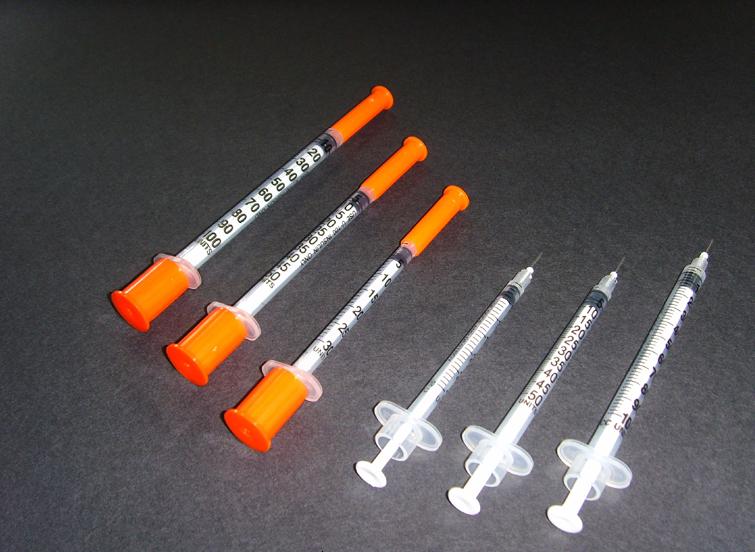

Categories: Insulin
Tags: Denisa Lazarescu —





